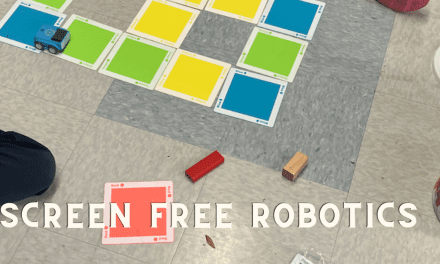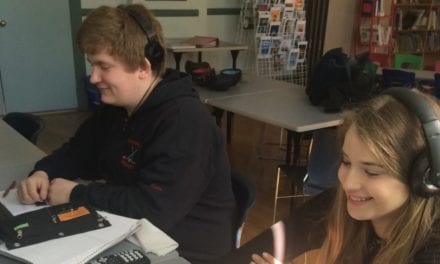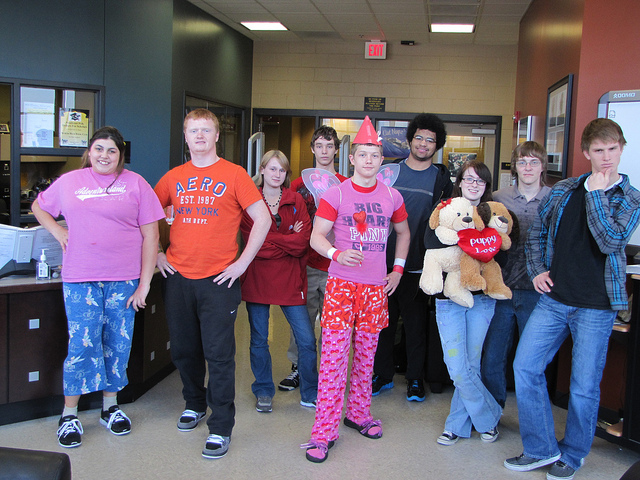I have a love/hate relationship with videoconferencing (VC). Ok, hate might be a tad strong. Love/irritation? Love/frustration? You see, living in a rural community here in Quebec, I get to use VC a lot. Granted, it’s incredibly convenient NOT to have to get up in the darkness of early morning and drive for hours in order to attend a meeting or do a presentation in Montreal. But more often than not, I feel that I’m missing out on something by not being physically present: the backchannel conversations that take place out of range of the microphone, the informal discussions around the lunch table, the more subtle body language of participants and colleagues. So, I was very happy to meet Craig Bullett (via VC no less!), as he made me see that this oft-maligned technology as I know it can be used effectively, and not just for something as pedestrian as a meeting, but for the highest of purposes…for teaching and learning.
Tell us a little bit about yourself, your background and experience?
Craig: For the past 4 years, I’ve coordinated videoconferences for the Community Learning Centre initiative that make links to the Quebec curriculum. The CLC concept is a MELS project, with over 37 centres across Quebec, which are dispersed through all 10 English School Boards in the province. These centres serve as hubs for English-language education and community development in their respective communities. We also partner with various local organizations and help them bring their resources to the educational community. I have taught many high school subjects over a 10-year teaching career with specializations in computer & technology and FSL. I also have a Masters in Educational Technology with experience in Distance Ed and e-learning.
Would you share a specific classroom project that you feel was particularly successful in terms of both effective use of VC and student learning outcomes?
Craig: One of the most memorable classroom VC experiences I’ve helped to coordinate was a writing workshop with “The Joy of Spooking” author PJ Bracegirdle. He was in Montreal and the participants were at an elementary school in Magog. This session was good because it was on time, it was on topic, it was on task and…it was interactive! The presenter was teaching a lesson about character development. For the ice-breaker, the author read an excerpt from his novel, a spooky book for young readers. Then, he and the students shared strategies for creating a character’s name. Once the students had a name, they were asked to draw their characters and each student was invited to walk up to the camera for a brief show and tell of the drawing. The final activity involved further development of their new characters and the writing of a sequence of events. The post-event feedback from all involved was highly positive and the teacher reported having difficulty in getting the students to stop writing when it was time to work on other subjects. I was also informed that the school library had to create a waiting list for students requesting spooky books!
Explain how you approach a VC event when working with teachers and others to create engaging learning opportunities. What are some of the conception phase considerations that determine whether VC is an appropriate medium?
Craig: My main caveat is this: If you don’t need interaction/reaction from your participants…DO NOT VC! Unlike face-to-face presentations, with VC you actually need to design the interactions. VC interactivity is more like a game-show or talk show than an infomercial. The host and the participants need to be equally prepared. So, when teachers consider using VC for an event they should be asking themselves:
- What is the purpose of my event?
- Who is my audience? (Location and numbers are important.)
- Why will I use VC? (Think about outcomes. Can VC get me there?)
Once you’ve decided that using VC is the right choice, if you are the organizer some of the pre-planning involves:
- Setting a date.
- Inviting participants (don’t forget to get confirmations or send reminders).
- Booking a venue(s).
- Sharing material, resources and links with all involved.
- Reserving bridging and technical support as needed.
If you are the classroom teacher you will need to:
- Reserve the VC room.
- Preview and modify content for your students.
- Create buzz for learners about the upcoming event.
- Prep the class to introduce themselves at the beginning and make closing remarks or “thank you’s” at the conclusion.
And once everything is over, evaluating the session is of the utmost importance. Follow-up to confirm successful outcomes and critical reflection on the experience are essential in order to integrate improvements into future events.
Where can interested teachers find resources to help with the ideas stage and planning for a VC event?
Craig: I thought you’d never ask! No, seriously there are tons of great resources listed on the LEARN site and you can find specifics in terms of CLC collaborations and educational videoconferencing here: www.learnquebec.ca/clc
As well, the 2Learn.ca Education Society has some amazing resources that support teachers who are interested in VC opportunities. These are mostly within Alberta but there are many collaborations with Quebec partners: www.2learn.ca/VC
And of course, I’m always available if people want to connect directly!
cbullett@learnquebec.ca
******
Have you been involved in any interesting classroom or professional development VC experiences that you’d like to share? Please don’t hesitate to school me in the comments section below 🙂






I’ve had the opportunity to work with Craig on a number of VC projects and I completely agree with him. Preparation is essential. The “Wow” factor of using a VC unit in the classroom goes away really quickly. Especially as we are working with young people who are more and more accustomed to this kind of technology. We need to make sure that a VC session brings additional resources to a unit or project. As a VC coordinator, one of the worst things I can hear a teacher say is “that was fun, but I could have done that myself.” It’s a polite way of saying we “that was fun, but we wasted our time.” Where it’s most successful is when it brings an experience or resources to the students that they otherwise would not have had.
Just a little addition to find VC resources.
Click ‘EDUCATIONAL VIDEOCONFERENCING'(orange button) on the CLC home page, or go directly with this link…
http://www.learnquebec.ca/en/content/clc/EducVideoconf.html
Music teachers contemplating the use of VC in your classes? Check out this Music Monday report from CTV News for inspiration on using VC for Arts and Music 🙂
http://montreal.ctvnews.ca/music-monday-goes-global-1.508446
I’ve given a PD day for teachers via VC. I was physically in the room with about half of them, and the other half was in a remote location. In retrospect, I would not do this again, as it didn’t seem fair to either set of learners! There is too much cognitive load on the facilitator to be able to handle all the interactions that need to take place in a constructivist learning environment.
VC is the field trip of the future for many rural and even urban schools. Done with protocols and rehearsal ahead of the event this is a fabulous tool for project style learning. We have just introduced Granby Zoo to this technology and they are now going to buy their own equipment. There is nothing in the world like a hippo up close and personal for a K student who has never seen a live one. Bussing would have cost us near 5 times the cost of this event with no guarantees that we would have seen them. We prepped questions for the Zookeeper ahead of time and they built their presentation on these questions. Fabulous and meaningful learnng…who could ask for more?
Awesome to hear that this zoo in Quebec is going to be accessible to students across the province by VC soon. There are many zoos in the US that are doing a great job on delivering sessions by VC to students – the drawback for us is that often our French teachers are looking for content from zoos and the American zoos only do VC in English. Looking forward to some bilingual content from here in Quebec!